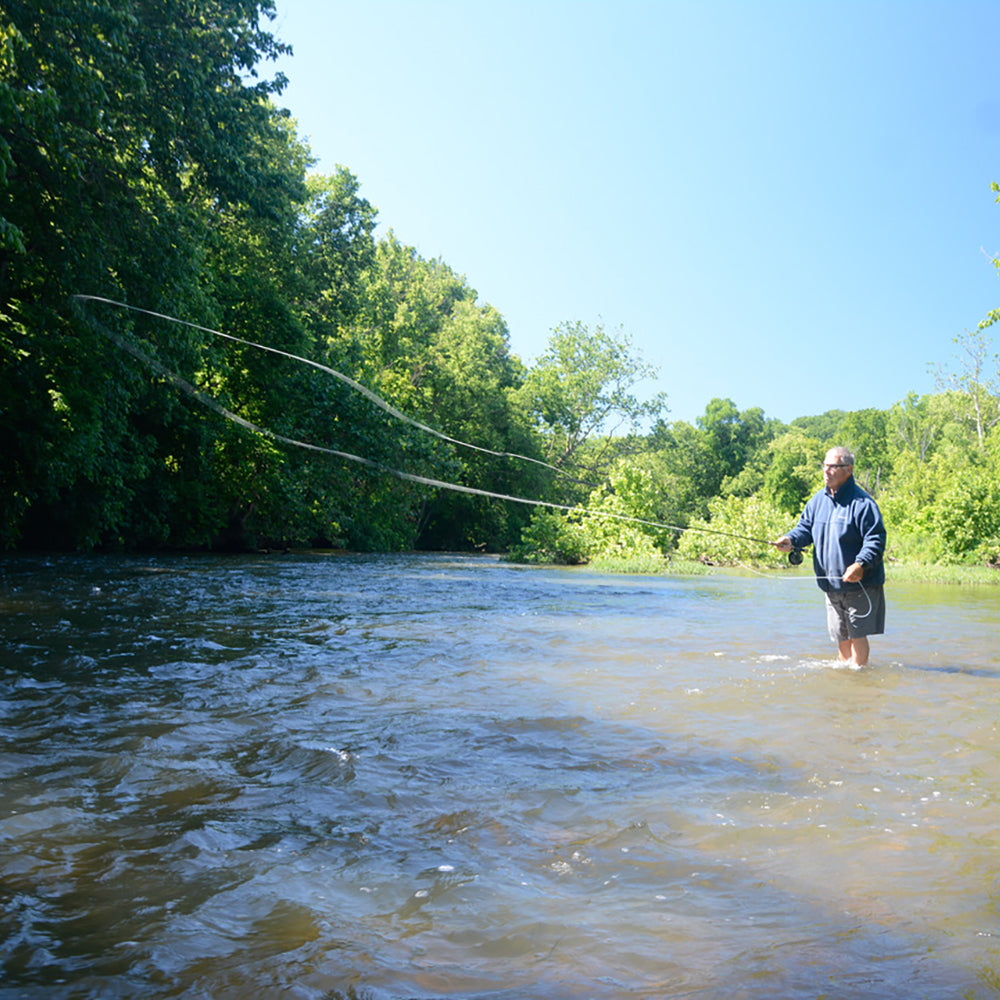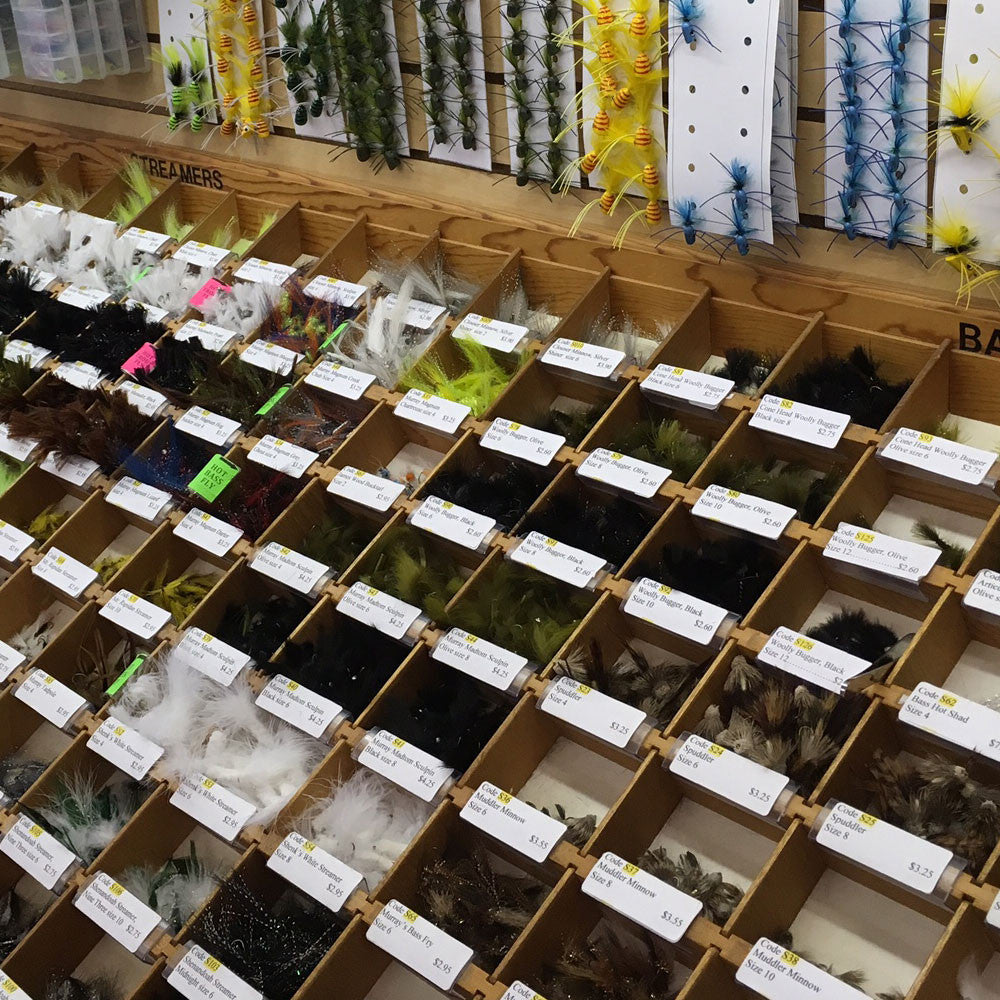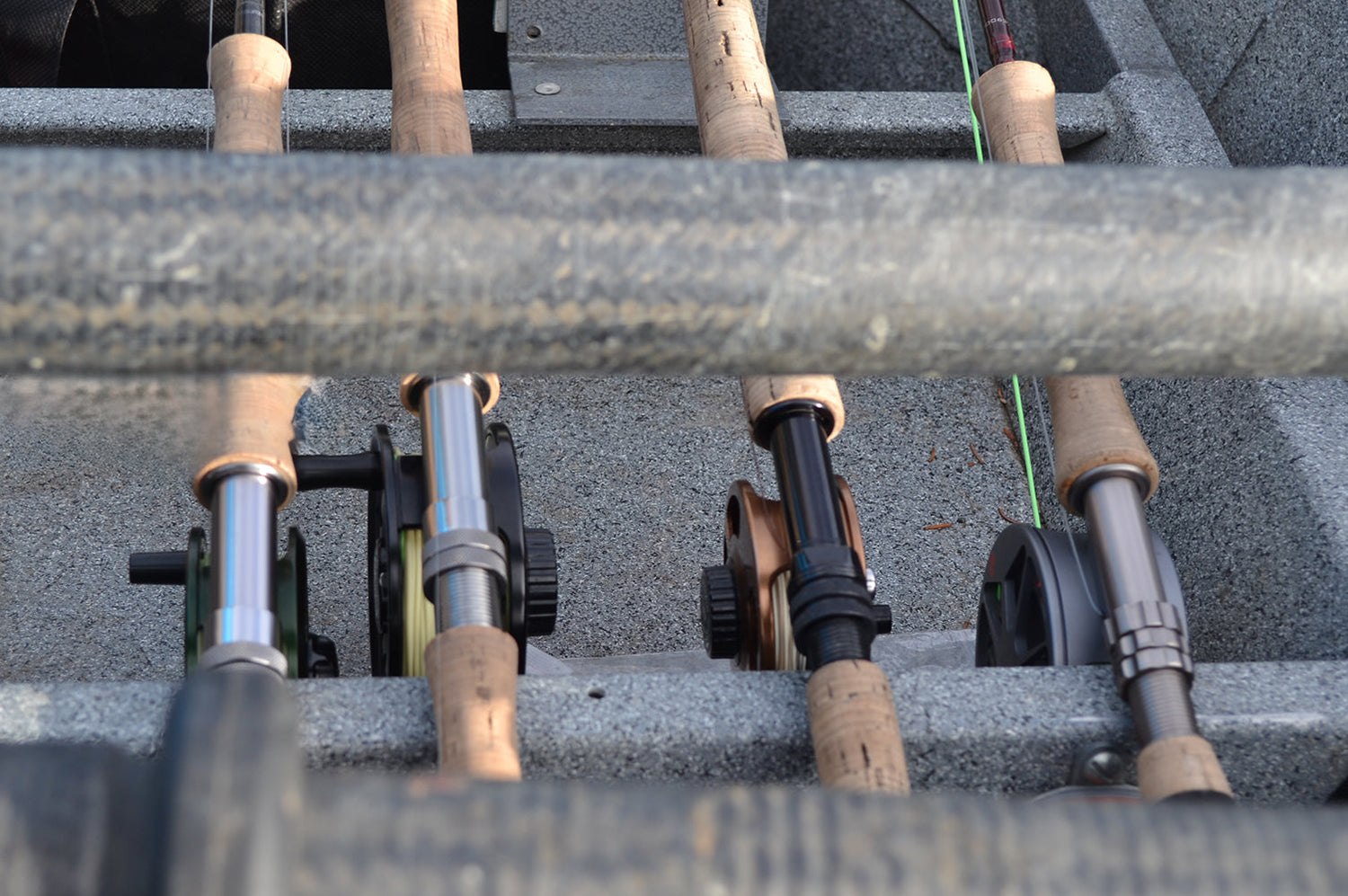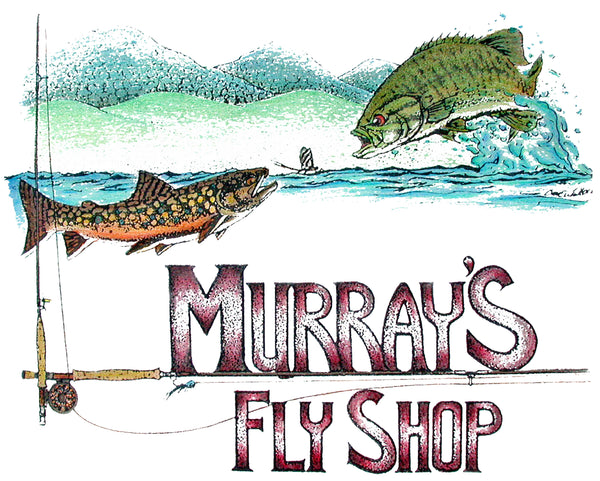Early Season Nymphing in Small Mountain Streams
Fishing nymphs for trout early in the season in small mountain streams just might give you many of your best trout of the entire year. The full streams often encountered at this time carry great natural nymph populations and once the water temperature reaches the mid forties the trout are on the lookout for this wealth of food.
In order for you to take advantage of this fine action let us examine the tactics and fly patterns which I have found effective all across the country.
For my personal fishing this distinction between the small streams and large streams rest primarily upon the direction I feel it is best to wade and fish the stream. If, for example, the stream is so small that wading and fishing it downstream would scare most of the trout I consider this a "small stream".

I began my serious trout fishing by fishing for brook trout in Virginia's Blue Ridge Mountains and as I reached out for the browns in the White Mountains of New Hampshire, the rainbows in the Smokies in North Carolina and the cutthroats in the Crazy Mountains in Montana I found many similarities. Reading the water, the effective tactics and the effective fly patterns were much the same in all of these headwater streams.
Early in the season the one important common characteristic shared by these trout is their desire to get the maximum amount of food while expending the least amount of energy. As we plan to fish the stream this means we would seek some object to block the current. The two areas in the pools which provide this are the boulders in the main parts of the pools and the protected runs close to the banks.
The upstream dead drifting nymph tactic will enable you to show your nymphs to trout holding in both of these areas so let us explore the mechanics for this method. The basic primes to keep in mind with the upstream dead drifting tactic is that you are wading upstream, casting upstream and detecting your takes by seeing the strikes.
There are two different goals one must master in order to be effective with this tactic.
The first one is simply getting the nymphs down close to the stream bottom where the trout are holding. I can help you achieve this quickly: You present your flies either straight upstream or up and across stream at a very slight angle to the side. You are not being fair to yourself if you shoot a cast up and across stream at a forty-five-degree angle and hope it will drift naturally close to the stream bottom. The currents sweeping downstream between you and your nymph will grab your line and leader and rob you of the depth you need. If you spot a nice-looking run that is far across the pool you should wade over below it so you can present your nymph more directly upstream.

The second challenge we confront in upstream dead drift nymphing is detecting the strike. This, also, can easily be achieved, but it requires a conscientious effort on your part for you must see this strike on your indicator system. Obviously, this means you must eliminate all of the slack from your line and leader as the nymph drifts down the stream to you. I want a tight line from the nymph all the way back to the fingers of my rod hand. Failure to maintain this contact would permit the trout to pick up my nymph, then discerning it to be a phony he could eject it without me being aware of his take.
The way I teach the students in my fly fishing classes to detect these strikes instantly is easy to learn and dependable to use because it relies on preventing the slack line before it occurs, rather than overcoming it after it develops. Here is how it works.
Upon the presentation cast the fly line is held firmly in the line hand and the line hand is kept within six inches of the rod grip. As the line rolls out on the presentation cast, I place the fly line over the first or second finger of my rod hand and strip in all of the slack line before the nymph touches the water. This last step is the most critical part for once this is mastered it assures that I have a tight line from the fingers of my line hand all the way to the nymph. It is then a simple matter to maintain this contact by using long, smooth strips with my line hand at the rate which the current is pushing the nymph back down the stream.
The indicator system I use in these small trout streams in the full streams early in the season consists of a nine foot knotted compound leader tapered down to 4X. Five feet of the butt section of my leader is constructed of fluorescent mono and I install two small tube type Scientific Angler's indicators on the leader. The first one is placed two to three feet above the fly and the second one is two feet further up the leader. When I am fishing, I always strive to see the indicator which is closest to the fly, if I can't see the second one, I watch the fluorescent butt of the leader. Then at the slightest hint of a strike I set the hook firmly with both my line hand and the rod.

Using this method, I work my way up the stream, carefully drifting my nymphs around the boulders and along the protected banks. I have found that short casts in the fifteen to twenty-five-foot range are preferable to longer casts. It is much easier to handle the drift, to detect the strike and to set the hook on the trout at these distances than with a longer line. And besides, we are fishing up the stream anyway and will cover all of the water as we go, so why take a chance on missing the strike of the best trout in the stream when with a few more steps you would have caught him.
I occasionally use a technique I call "swing nymphing" in mountain streams that have pools from four to five feet deep and are slightly wider than normal.
Here I move cautiously into the side of the pool and cast up and across stream at a forty-five-degree angle so my nymph lands just where the riffle enters the deep part of the pool. After it sinks deeply, I extend my fly rod up and out over the stream at a forty-five degree angle. I now take up the slack line with my line hand and swing the fly rod downstream ahead of the drifting nymph, being sure to keep a tight line on the fly so I can quickly feel the strike and set the hook. Successive casts are made two feet to the far side of the previous casts until I have covered all the pool.
Many of the beginners in my trout fly fishing schools catch many of their largest trout with this "swing nymphing" technique because they find that it is easier to feel the strikes with this method than to see them with the dead drift method.

My favorite nymphs in the headwater streams early in the season are the Mr. Rapidan Bead Head size 12 & 14, the Bead Head Squirrel Nymph size 14 and 16, and the Gold Ribbed Hare's Ear all in sizes 10, 12, and 14.
Many anglers find that they get some of their best trout fishing of the year early in the season by using nymphs. Give these methods a try and see how you do.
|
Ten Tips for Early Season Trout Nymphing in Mountain Streams |
|
(1) Use a very cautious approach to prevent scaring trout in small mountain stream. |
|
(2) During periods of high water in the spring go up high in mountain streams to find more favorable water levels. |
|
(3) Compound knotted leaders using five feet of fluorescent mono in the butt with two small Scientific Angler's tube type indicators are a great help in detecting strikes with nymphs. |
|
(4) Do not false cast over the pools because this may scare the trout. |
|
(5) Set the hook quickly at the first hint of a strike because often the trout take a nymph gently in the cold water. |
|
(6) Learn to set the hook with the line hand as well as the rod in order to quickly telegraph the strike to the trout. |
|
(7) Sharpen your nymph hooks often to assure good trout hooking. |
|
(8) Be sure to keep a tight line from your line hand all the way down to the nymph in order to quickly detect the trout's strike. |
|
(9) Continue fishing in periods of rain and snow in the spring because the trout keep feeding and they are often less wary. |
|
(10) Land your trout as quickly as possible and release them gently to assure that they will survive. |
-

Learn Fly Fishing at Murray’s Fly Shop: Classes, Workshops & Schools
Welcome to Murray’s Fly Shop – Your Fly Fishing Learning Hub At...
-

Featured Flies of the Month
Harry Murray's recommended fly list for this time of the year. (March...
-

Fly Fishing Rod Outfits
Fly Fishing Rod and Reel Outfits for Smallmouth Bass fly fishing, Trout...



